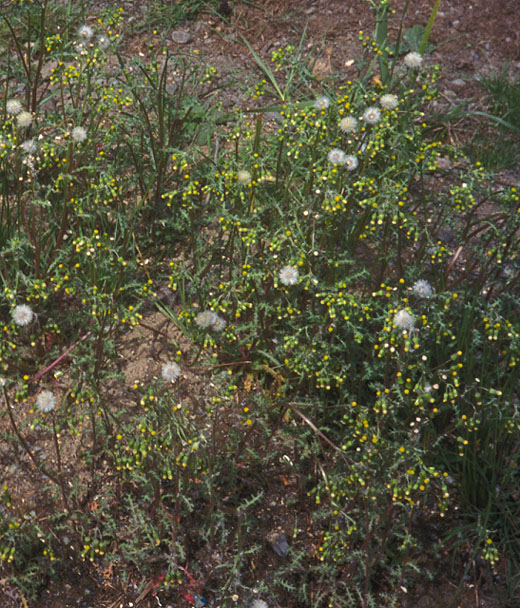
|
| Groundsel; Senecio vulgaris L. |
Sunflower Family; COMPOSITÆ (ASTERACEÆ)
|
| Groundsel is a small, weak, juicy, annual herb with crinkly, crisp, cut-edged leaves. It has small yellow flowers that turn into
white, fluffy parachute-winged seeds. Abundant throughout the year, it is found virtually always on exposed, more or less sunny soil, which
it colonizes with extraordinary rapidity due to its producing myriad seeds. It can flower when only two inches tall; the largest specimens,
in rich gardens, ascend, sprawl, then rise again, reaching a total length of
11/2 to
21/2 feet. |
| From the Old World, its English name "Groundsel" was derived from an Anglo-Saxon one meaning "Ground Swallower."
Control of this greedy glutton is easy: make the
ground swallow it, by turning under its seedlings on a regular basis. Although well-flavored, it
ought not be eaten, being mildly poisonous (cousin of the seriously toxic Tansy Ragwort). Herbal practitioners of old used it sparingly,
and probably more so because it was ubiquitous than because it had any strong claims to potent curative properties. In short, humans
find Groundsel a worthless little pest. It is mainly only significant for birds: canaries and others love eating it; its seeds are added to
birdseed mixes. It's also fed to chickens and rabbits. |
Another fun English name is Old Man of the Spring, thus explained in an antique book (Bullein's
Book of Simples, 1562): "The flower of this herbe, hath whyte hayre, and when the wynde bloweth it awaye, then it appeareth like a Bald headed Man."
|
Originally published as the Seattle Tilth newsletter Weed of the Month in March 1986, along with an illustration drawn by Jerri Geer.
Back |
|
|

